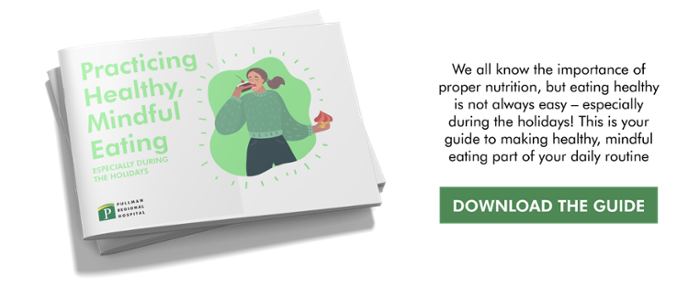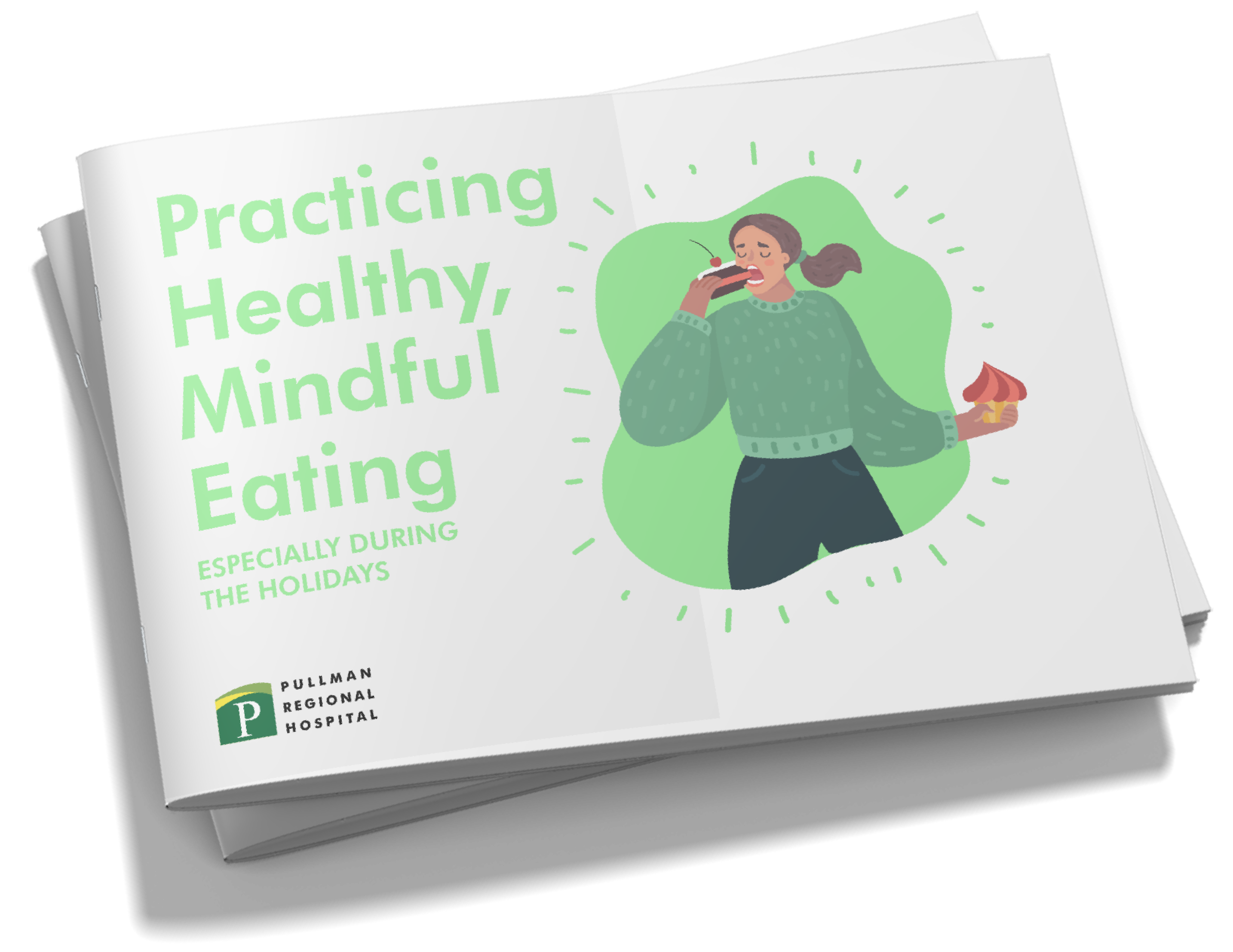The holidays are a time for celebration, reflection, and getting together with loved ones. It’s also a time for dining. From Thanksgiving dinner to holiday parties, there’s no shortage of sumptuous eats. It is the holiday, though, so it’s acceptable to indulge… right?
According to Melissa Francik, Pullman Regional Hospital Dietitian, Wellness Coach, and Weight Management Specialist, it’s that kind of mindset that often gets people into trouble. “People correlate special holiday foods with the sense of community, with happy memories. Consequently, that food tends to be everywhere, and it tends to be richer in calories,” she says. “There’s also the scarcity mindset, where they think if they don’t eat it now, they’re going to miss out somehow.”
An additional challenge is that treats seem to pop up at every turn—the bank, doctor’s office, office break room. All of those mini candy bars can really add up, and quickly. Plus, with colder weather in certain parts of the country, people may not be as active as they are during the warmer months, which only compounds the problem.
Tips for Eating Mindfully during the Holidays
The likelihood of traditions going away is slim-to-none, so Francik says individuals need to go into the holiday season with a plan. She suggests keeping track of your daily intake, either through a mobile app, journaling, or even snapping photos. Another proactive approach is to weigh yourself weekly, so you can get ahead of weight gain before it gets out of control.
If you’re attending a potluck party, Francik encourages bringing foods you know are healthy and nourishing—but that you still enjoy. She also cautions against filling up your plate before checking out all the options. “A really great strategy is to survey all the options first… walking around and seeing what all the choices are. Approach it with curiosity, almost like a food reporter, someone on a food network being curious about the foods and which ones are worth it for you.”
Alcohol is also often part of celebrations, but those empty calories can rack up if you’re not mindful. If you are going to partake, choose lower calorie drinks and mixers.
The Basics of Mindful Eating
Mindful eating is a significant component of Francik’s methodology with her patients. This technique involves being fully present when eating, so you can use all of your senses to enjoy each moment, each bite of what you’re having.
“Think of it like wine tasting. You don’t taste wine to get drunk. You take small sips and you appreciate all the qualities of the wine,” she explains. “With mindful eating, you balance nourishing your body with pleasure and enjoyment. Eating with mindfulness helps us to actually get that satisfaction factor with a very small portion of the food.”
Other Healthy and Enjoyable Holiday Activities
While food is undoubtedly a large aspect of the holidays, it doesn’t have to be everything. Non-food activities can provide that special feeling without piling on calories. Some can even burn calories, like snowshoeing, skiing or tubing, ice skating, or even just playing in the snow.
“I personally love playing board games or card games. Sitting around the fire with a cup of tea, holiday music, or classic movies,” shares Francik. “You could even just sit around and share stories about holiday memories without food being the trigger. Just try to find a way to experience those special memories that doesn’t revolve around food.”
Yet, the holidays shouldn’t be about deprivation. As humans, we have the need for nutrition, but we also have a hedonic system that drives eating behaviors and reflects the satisfaction value or pleasure value of food. “That’s very important. But instead of calling these treats junk food, I like to say they’re play food. And play food is part of ‘normal’ eating,” assures Francik. “About 10% or so of a normal diet should be play food and 90% should represent your nutritional needs.”


